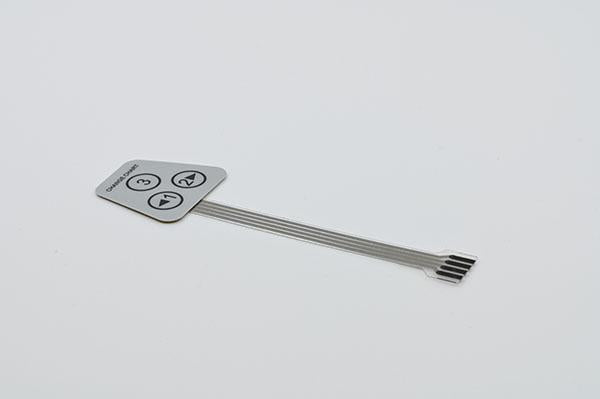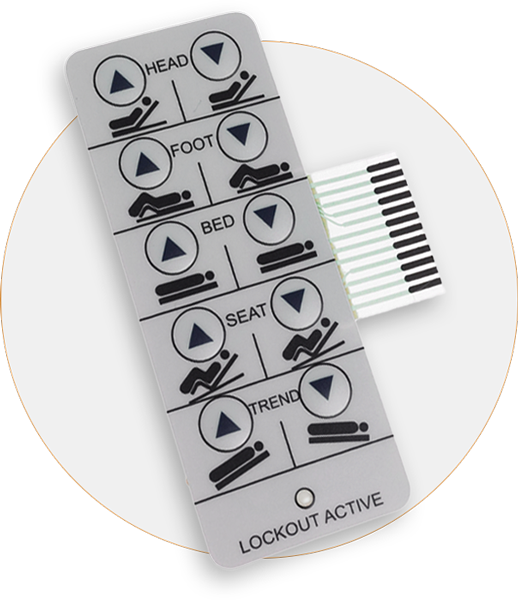Membrane Switches: A Key Component in Personalized Control Panels
Why Membrane Layer Switches Are Essential for Durable Control Equipment
Membrane buttons play a pivotal role in guaranteeing the longevity and integrity of control systems across various industries. Their one-of-a-kind building permits them to endure difficult environmental aspects such as moisture, temperature level extremes, and physical wear. This durability not just extends the lifespan of the systems they offer yet additionally decreases maintenance demands. As we explore the diverse advantages of membrane layer switches, it becomes obvious that their importance goes beyond mere capability, influencing individual experience and functional performance. What further ramifications do these attributes hold for the future of control system design?
Summary of Membrane Layer Switches
Membrane switches are functional and reliable elements generally used in numerous electronic control systems. These buttons are composed of several layers, consisting of a visuals overlay, a spacer layer, and a printed circuit layer. The graphic overlay provides both practical and visual layout, while the spacer layer makes sure that the switches are activated only when pressed. The published circuit layer has conductive traces that complete an electric circuit when the membrane layer is pushed, allowing the device to react to individual inputs.
Membrane switches are frequently favored in applications requiring a small and light-weight layout, making them excellent for portable gadgets, medical devices, and commercial machinery. They can be personalized to fulfill particular user demands and can include various attributes such as backlighting, tactile feedback, and numerous colors. Membrane buttons are immune to dust, dampness, and contaminants, making them ideal for environments where sturdiness is important.
Advantages of Durability
In several applications, the toughness of membrane layer switches over offers significant benefits that improve their total efficiency and dependability. These buttons are made to hold up against rough settings, making them perfect for usage in demanding problems such as high humidity, extreme temperatures, and direct exposure to chemicals. Their durable construction aids to avoid damage from physical effect, making certain lasting capability and reducing the need for regular replacements.
Furthermore, membrane layer buttons are resistant to deterioration, which is crucial in applications where regular communication takes place. This durability converts to decrease maintenance costs, as companies take advantage of decreased downtime and less solution disruptions. In addition, the encapsulated design of membrane switches over protects inner components from dust and moisture access, further adding to their life expectancy.
One more advantage is their ability to keep regular performance in time. With a high tolerance for mechanical stress, these buttons preserve their responsive feedback and electrical stability, making sure user complete satisfaction. Eventually, the longevity of membrane switches not only improves operational performance however likewise cultivates self-confidence in their reliability, making them a recommended choice for control systems across numerous industries.
Applications in Numerous Industries
Durable control systems employing membrane layer buttons discover comprehensive applications across a variety of sectors, each gaining from the distinct attributes these switches offer. In the clinical field, membrane layer buttons are important for devices such as client screens and analysis tools, where dependability and convenience of cleansing are extremely important. Their resistance to moisture and pollutants ensures they preserve functionality in sterilized settings.
The vehicle sector leverages membrane layer buttons for dashboard controls and infotainment systems, where they supply sleek, low-profile interfaces that enhance individual experience. These switches are likewise developed to withstand rough problems, including direct exposure to severe temperature levels and resonances.
In industrial setups, membrane buttons are generally used in equipment control board, offering responsive comments and sturdiness essential for high-usage applications. Their capacity to stand up to chemicals makes them ideal for producing settings where spills and pollutants are frequent.

Customer electronic devices, such as kitchen appliances and remotes, likewise use membrane switches for their versatility and cost-effectiveness. Overall, the versatility and robust nature of membrane switches make them vital across different industries, making certain effective operation and longevity in control systems.
Design and Aesthetic Appeal
While performance is extremely important, the layout and visual allure of control systems outfitted with membrane switches play a vital duty in customer involvement and overall experience (membrane switch). The aesthetic style look at here now of these switches can considerably influence customer understanding and communication. A properly designed membrane switch improves the attractiveness of the tool, making it extra enticing to individuals and fostering a connection between the customer and the product
Membrane switches supply a good deal of adaptability in design, enabling manufacturers to tailor graphics, colors, and textures to straighten with brand name identification and item aesthetics. The use of dynamic colors and unique patterns can draw interest, while tactile comments can strengthen the customer's communication with the tool. Furthermore, the ability to integrate LED signs and backlighting right into the membrane layer switch style gives both useful and visual advantages, enhancing presence and usability in different settings.

Enhancing Customer Experience

Furthermore, membrane layer switches can be customized to incorporate visual user interfaces, boosting functionality by offering details in a clear and instinctive fashion (membrane switch). This personalization can consist of symbols, labels, and shade coding that guide users with facility performances easily. Additionally, their flexibility enables integration in numerous settings, making sure consistent performance whether in commercial machinery or customer electronic devices
The toughness of membrane layer switches also plays an essential function in individual experience. By holding up against rough conditions and expanded usage, these buttons reduce the possibility of system failings, hence promoting dependability and individual confidence. Eventually, the calculated use membrane layer switches not just elevates functionality yet also significantly improves navigate to this website individual communication with control systems, see post making them a vital component in modern style.
Final Thought
